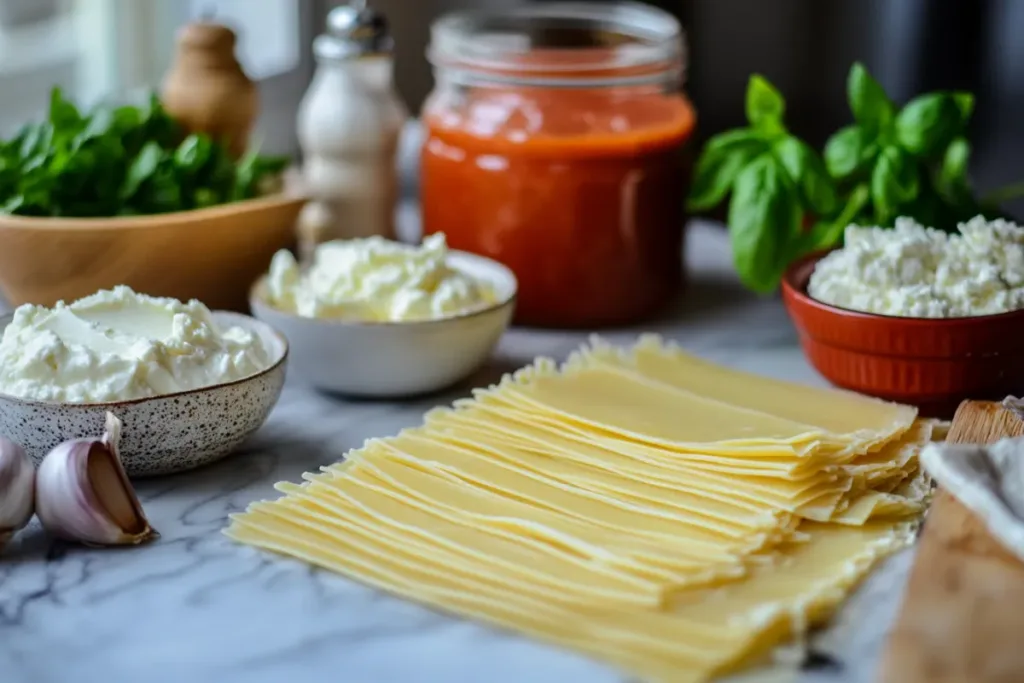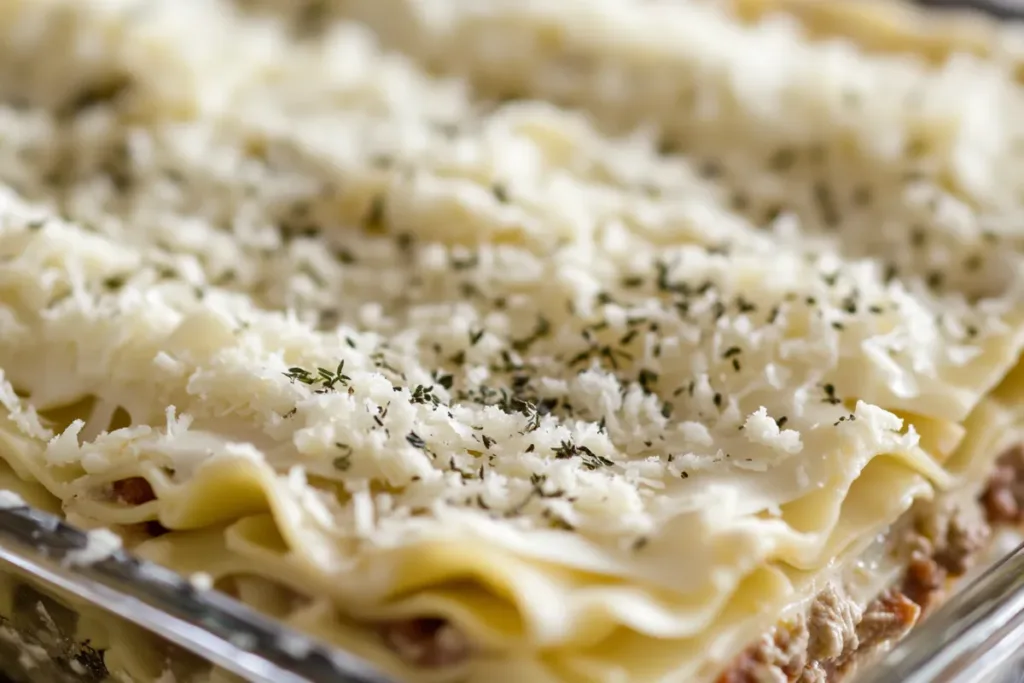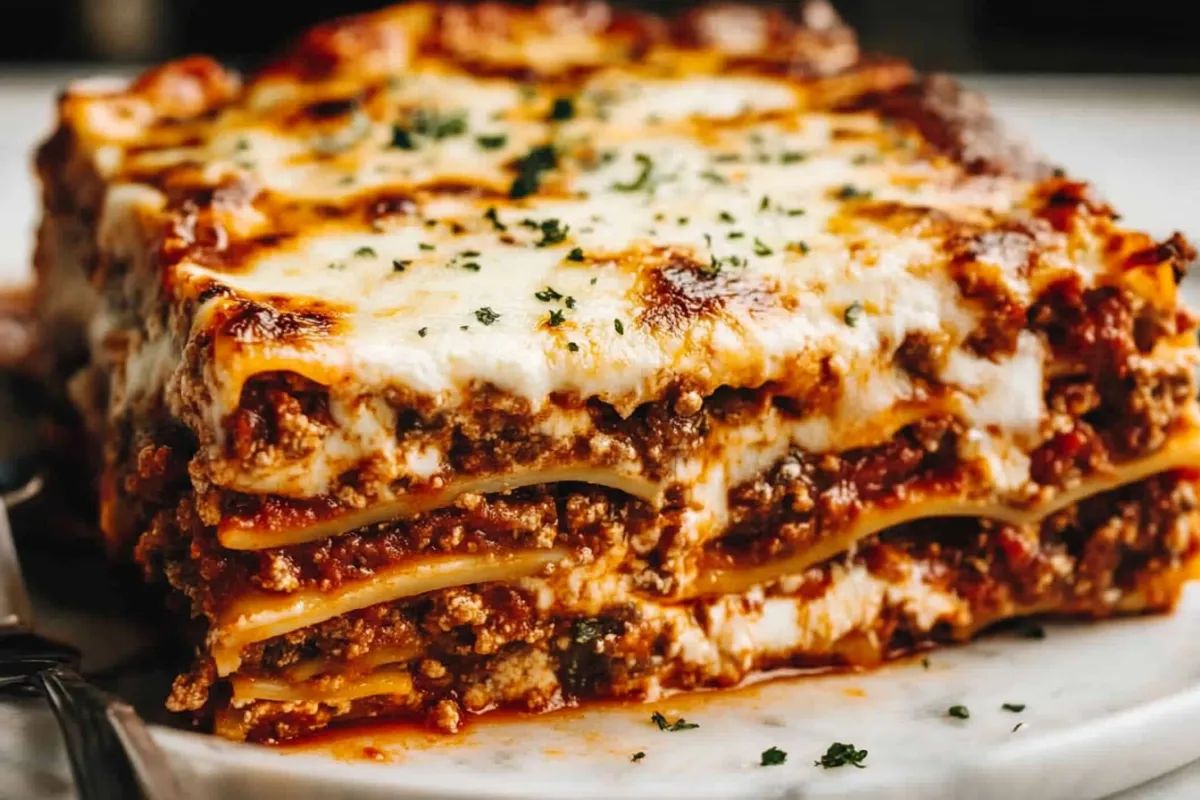Lasagna is more than just a pasta dish—it’s a comfort food icon that has been cherished by people worldwide for centuries. Whether you’re preparing it for a family gathering, a dinner party, or a cozy meal at home, lasagna is sure to satisfy. With its layers of savory meat sauce, melted cheese, and perfectly cooked noodles, lasagna offers a flavor combination that’s hard to beat.
This comprehensive guide will help you master the art of making the perfect lasagna. You’ll learn about traditional lasagna recipes, creative variations, common mistakes to avoid, and tips to make your lasagna a crowd-pleaser every time. Let’s dive in!
The Origins of Lasagna: A Comfort Food for All Occasions
Lasagna has a rich and intriguing history that dates back to ancient Italy, where early pasta dishes were first enjoyed. The word “lasagna” stems from the Greek word laganon, referring to flat sheets of dough. These early versions evolved over time, with the modern lasagna we know today emerging during the Middle Ages in Italy. Originally, lasagna was made with layers of pasta, meat, cheese, and vegetables—variations that still exist today.
The dish became particularly popular in Bologna, Italy, where the rich, meat-filled Bolognese sauce became a hallmark of the classic meat lasagna. Over time, as Italians migrated to different parts of the world, lasagna gained global popularity, with each region adding its own spin on this classic comfort food.
Essential Ingredients for the Perfect Lasagna
To make a flawless lasagna, you’ll need high-quality ingredients that work together to create delicious layers. The four key components of a great lasagna include:

1. Noodles
Traditional lasagna uses long, flat pasta sheets, but there are several options depending on your dietary needs:
- Regular lasagna noodles: The standard choice for many recipes. These are boiled until al dente, meaning they are firm yet tender.
- No-boil noodles: For those short on time, no-boil noodles save a step as they soften during baking.
- Gluten-free alternatives: If you’re avoiding gluten, there are many excellent gluten-free pasta options available in grocery stores.
2. Cheese
Cheese is a key player in creating the creaminess and richness of lasagna. The most common cheeses include:
- Ricotta cheese: A soft cheese often mixed with an egg to help create a creamy, cohesive filling.
- Mozzarella: Offers the gooey, melty texture everyone loves in lasagna.
- Parmesan: Adds a nutty, salty flavor to balance the richness of the other ingredients.
- Cottage cheese: An alternative to ricotta for those who prefer a lighter lasagna.
3. Meat or Vegetables
Lasagna is traditionally made with ground beef or Italian sausage, but there are countless variations:
- Ground beef or Italian sausage: Adds rich, savory depth.
- Vegetables: For a lighter option, use vegetables like zucchini, spinach, and mushrooms.
4. Sauce
There are two main types of sauces used in lasagna:
- Tomato-based sauce: Such as marinara or Bolognese, for a classic, hearty flavor.
- Béchamel sauce: A creamy white sauce often used in vegetable and seafood lasagnas.
Step-by-Step Guide to Classic Meat Lasagna
1. Preparing the Meat Sauce
The sauce is arguably the most critical part of a delicious lasagna. Begin by browning ground beef or Italian sausage in a large skillet over medium heat. Adding onions and garlic enhances the overall flavor profile of your sauce. Once the meat is browned, add tomato sauce, tomato paste, and crushed tomatoes. Season the sauce with herbs like oregano, basil, and a pinch of sugar to balance the acidity of the tomatoes.
Tip: Adding a splash of red wine while the sauce simmers adds complexity to the sauce’s flavor. Let the sauce simmer on low heat for at least 30 minutes to develop the flavors fully.
2. Cooking the Lasagna Noodles
While the sauce is simmering, boil a large pot of salted water. Cook the lasagna noodles until al dente, which typically takes 8 to 10 minutes. Drain the noodles and lay them flat on a baking sheet to prevent them from sticking.
Alternative: If you’re short on time, no-boil lasagna noodles can be an excellent substitute. These noodles cook directly in the oven as the lasagna bakes, absorbing moisture from the sauce.
3. Making the Cheese Mixture
In a separate bowl, mix ricotta cheese with a beaten egg, a cup of grated Parmesan, and some freshly chopped parsley. This mixture creates the creamy layers between the pasta and sauce. You can also add shredded mozzarella for extra cheesiness.
Tip: If you’re looking to cut calories, consider using cottage cheese in place of ricotta. It provides a similar texture with fewer calories and less fat.
4. Assembling the Lasagna

Now comes the fun part—assembling the lasagna! Start by spreading a thin layer of the meat sauce at the bottom of your baking dish. Place a layer of cooked noodles on top of the sauce, followed by a layer of the cheese mixture, and then slices of mozzarella cheese. Repeat these layers until all ingredients are used up, finishing with a layer of meat sauce and a final topping of mozzarella and Parmesan cheese.
5. Baking the Lasagna
Cover the lasagna with aluminum foil and bake at 375°F for about 25 minutes. After 25 minutes, remove the foil and continue baking for an additional 25 minutes until the cheese is melted, bubbly, and golden brown on top. Let the lasagna rest for 15 minutes before slicing.
Creative Lasagna Variations
While the classic meat lasagna is beloved, there are many other ways to enjoy this dish. Here are some of the most popular variations:
1. Vegetarian Lasagna
For those who prefer a meat-free option, vegetarian lasagna is an excellent choice. Instead of using ground beef or sausage, you can roast vegetables like zucchini, eggplant, and bell peppers. You can even add layers of sautéed spinach or kale to enhance the flavor.
Tip: Adding a béchamel sauce layer will make your vegetarian lasagna extra creamy.
2. Seafood Lasagna
For a more decadent option, seafood lasagna is a luxurious treat. Common seafood ingredients include shrimp, crab, and lobster. Instead of a tomato-based sauce, seafood lasagna often uses a béchamel or cream-based sauce to complement the delicate flavors of the seafood.
Tip: A sprinkle of fresh lemon zest can brighten up the creamy flavors and balance the richness.
3. Low-Carb and Gluten-Free Lasagna
If you’re following a low-carb or gluten-free diet, traditional pasta noodles can be swapped out for thinly sliced vegetables like zucchini, eggplant, or even butternut squash. You can also find gluten-free pasta at most grocery stores to suit dietary preferences without compromising flavor.
Tip: For a keto-friendly version, deli meats like ham or turkey can be used in place of pasta sheets.
4. White Lasagna
A white lasagna is made with béchamel sauce instead of tomato sauce and can include ingredients like spinach, mushrooms, and chicken. It’s a lighter, creamier version of the traditional lasagna and can be equally satisfying.
Common Lasagna Mistakes (And How to Avoid Them)
Even seasoned cooks can encounter challenges when making lasagna. Here are some common mistakes and how to avoid them:
1. Watery Lasagna
One of the most common issues is watery lasagna, which can occur if the sauce is too thin or if the vegetables are not cooked properly. To avoid this, make sure your sauce is well-reduced, and precook any vegetables to remove excess moisture.
Tip: Baking the lasagna uncovered for the last 10 to 15 minutes can help evaporate any remaining liquid.
2. Overstuffed Layers
It’s tempting to load each layer with an abundance of sauce and cheese, but this can lead to uneven cooking. Stick to moderate amounts of filling to ensure even layers and a well-structured dish.
3. Burnt Top Layer
To avoid burning the top layer of cheese, cover the lasagna with foil during the first part of the baking process. Then, remove the foil for the last 15 minutes to let the cheese brown perfectly.
Storing and Reheating Lasagna: Making the Most of Leftovers
Lasagna is one of those dishes that tastes just as good (if not better) the next day. It’s perfect for meal prep or for making in advance. Here’s how to store and reheat lasagna to maintain its deliciousness:
Storing Lasagna
- Refrigerate: Store leftover lasagna in an airtight container in the refrigerator for up to 3 days.
- Freezing: To freeze, cool the lasagna completely before wrapping it tightly in plastic wrap and aluminum foil. It will keep in the freezer for up to 3 months.
Reheating Lasagna
For best results, reheat lasagna in the oven at 350°F. This will ensure the texture remains firm and the cheese doesn’t become rubbery, which can happen when microwaved.
Serving Suggestions: What to Pair with Lasagna
Lasagna is a hearty, filling dish, but pairing it with the right side dishes can elevate the meal. Here are a few options that go well with lasagna:
- Salads: A crisp Caesar salad or arugula salad with a light vinaigrette can provide a refreshing balance to the rich flavors of lasagna.
- Garlic Bread: Garlic bread is perfect for soaking up any extra sauce from your lasagna.
- Roasted Vegetables: Try serving lasagna with roasted vegetables like zucchini, broccoli, or Brussels sprouts for a healthy, flavorful side.
Frequently Asked Questions (FAQs) About Lasagna
1. Can you make lasagna ahead of time?
Yes! You can assemble lasagna up to 24 hours in advance and store it in the refrigerator before baking. This makes lasagna an excellent choice for meal prep or hosting events.
2. Why is my lasagna watery?
Watery lasagna can occur if the noodles aren’t drained properly or if the sauce is too watery. Be sure to simmer your sauce long enough to thicken, and let the lasagna rest before cutting into it to allow any excess liquid to settle.
3. Can I freeze lasagna?
Yes, lasagna freezes well. Just be sure to wrap it tightly to prevent freezer burn. It can last up to 3 months in the freezer.
4. What cheeses work best for lasagna?
The classic combination is ricotta, mozzarella, and Parmesan. However, feel free to experiment with other cheeses like Fontina, Asiago, or even goat cheese for different flavor profiles.
5. How long should lasagna rest before serving?
Letting your lasagna rest for 10-15 minutes after baking allows the layers to set, making it easier to cut and serve without falling apart.
Conclusion
Lasagna is the ultimate comfort food that brings people together for any occasion. Whether you’re making a classic meat version or experimenting with a vegetarian or seafood variation, lasagna never disappoints. By following this guide, you’ll have all the tools to make the perfect lasagna, no matter the event.
Looking for more mouthwatering recipes? Visit www.cheeryrecipes.com for more delicious ideas to impress your family and friends!
Print
𝑳𝒂𝒔𝒂𝒈𝒏𝒂
- Total Time: 1 hour 50 minutes
Description
A hearty and comforting dish featuring layers of tender pasta, rich meat sauce, and a blend of ricotta, mozzarella, and Parmesan cheeses, all baked to perfection for a family favorite.
Ingredients
- 12 lasagna noodles
- 1 lb ground beef or Italian sausage
- 1 large onion, chopped
- 4 cloves garlic, minced
- 28 oz can crushed tomatoes
- 6 oz can tomato paste
- 2 cups ricotta cheese
- 1 egg
- 2 cups shredded mozzarella cheese (divided)
- 1/2 cup grated Parmesan cheese
- 2 tbsp fresh basil, chopped
- 1 tbsp dried oregano
- Salt and pepper to taste
Instructions
- Prepare the Sauce: In a large skillet, sauté the ground meat with onions and garlic until browned. Stir in crushed tomatoes, tomato paste, and seasoning. Simmer for 1.5 hours, stirring occasionally for deeper flavor.
- Cook the Noodles: Boil lasagna noodles in salted water until al dente. Drain and lay flat on a baking sheet.
- Mix the Cheese: In a bowl, combine ricotta, egg, half of the Parmesan, and half of the mozzarella.
- Layer the Lasagna: In a baking dish, spread a layer of meat sauce, followed by noodles, ricotta mixture, and mozzarella. Repeat, ending with sauce and topping with the remaining mozzarella and Parmesan.
- Bake: Cover with foil and bake at 375°F (190°C) for 25 minutes. Remove the foil and bake uncovered for an additional 25 minutes until the top is bubbly and golden.
- Rest and Serve: Let the lasagna rest for 15 minutes before slicing and serving.
- Prep Time: 20 minutes
- Cook Time: 1 hour 30 minutes
- Cuisine: Italian
Nutrition
- Serving Size: 8
- Calories: 500 per serving
Keywords: lasagna, best lasagna recipe, classic lasagna, easy lasagna, homemade lasagna, vegetarian lasagna

